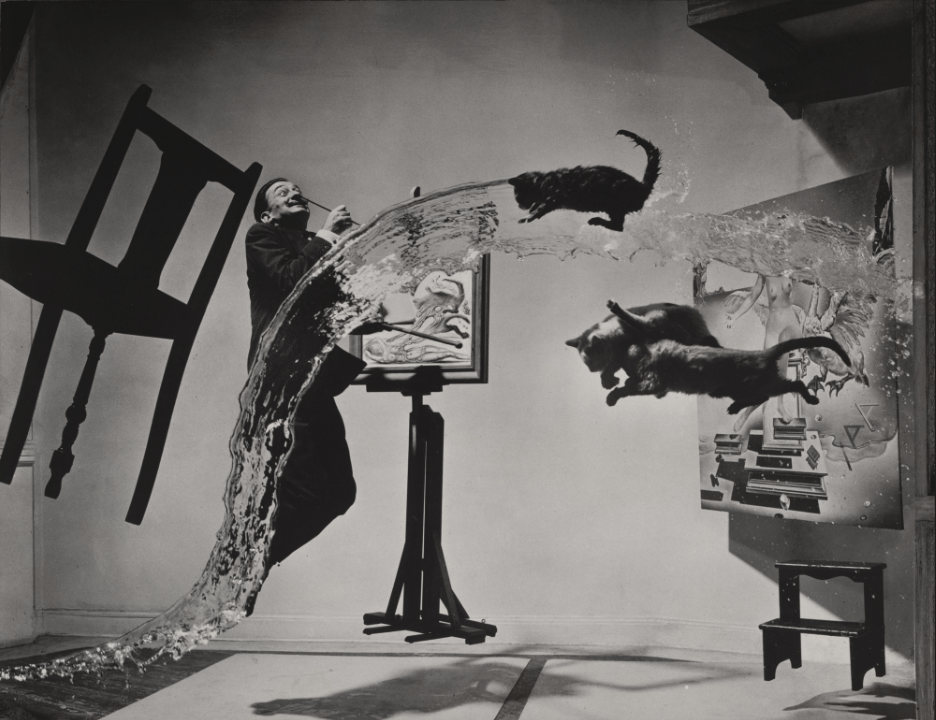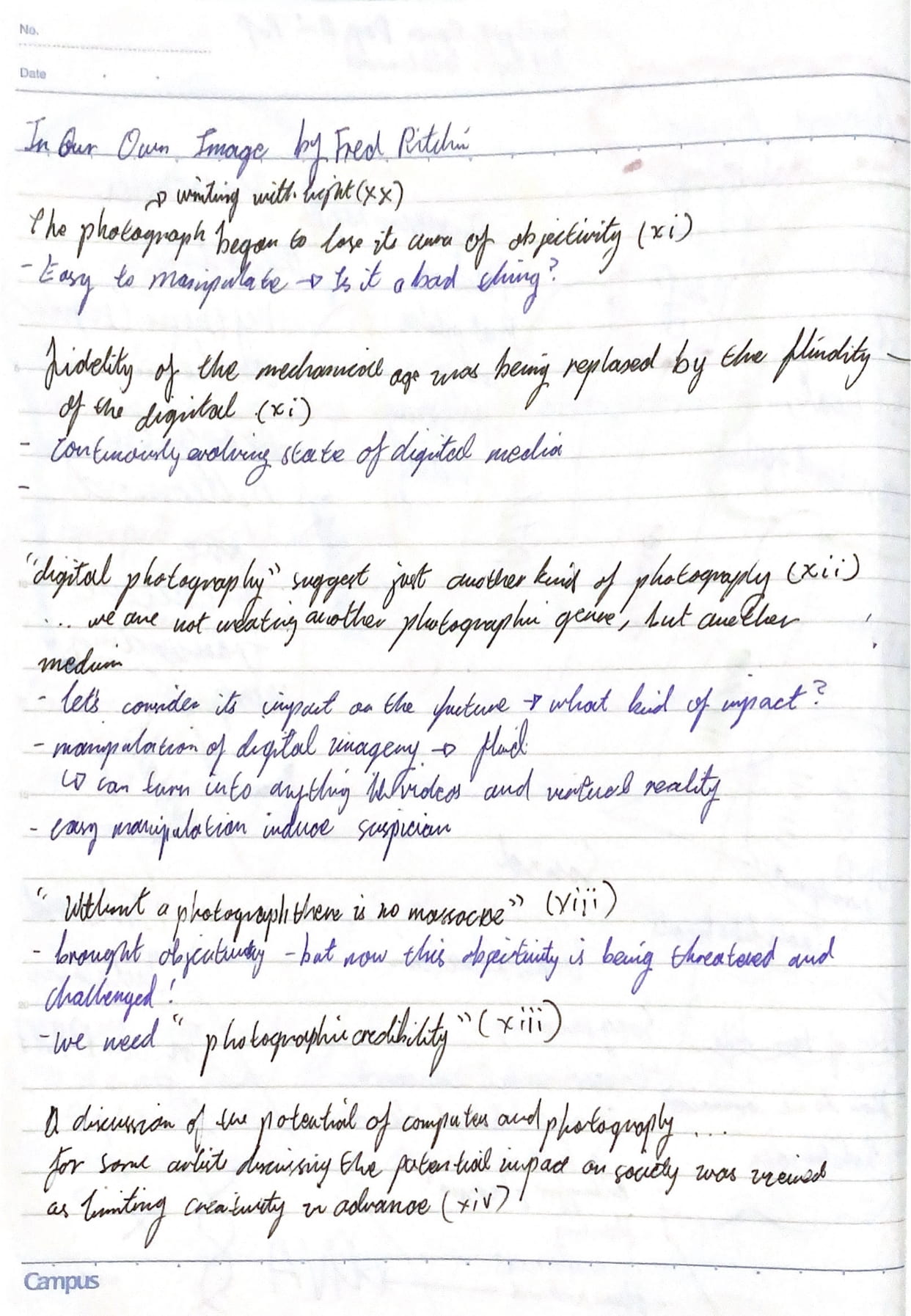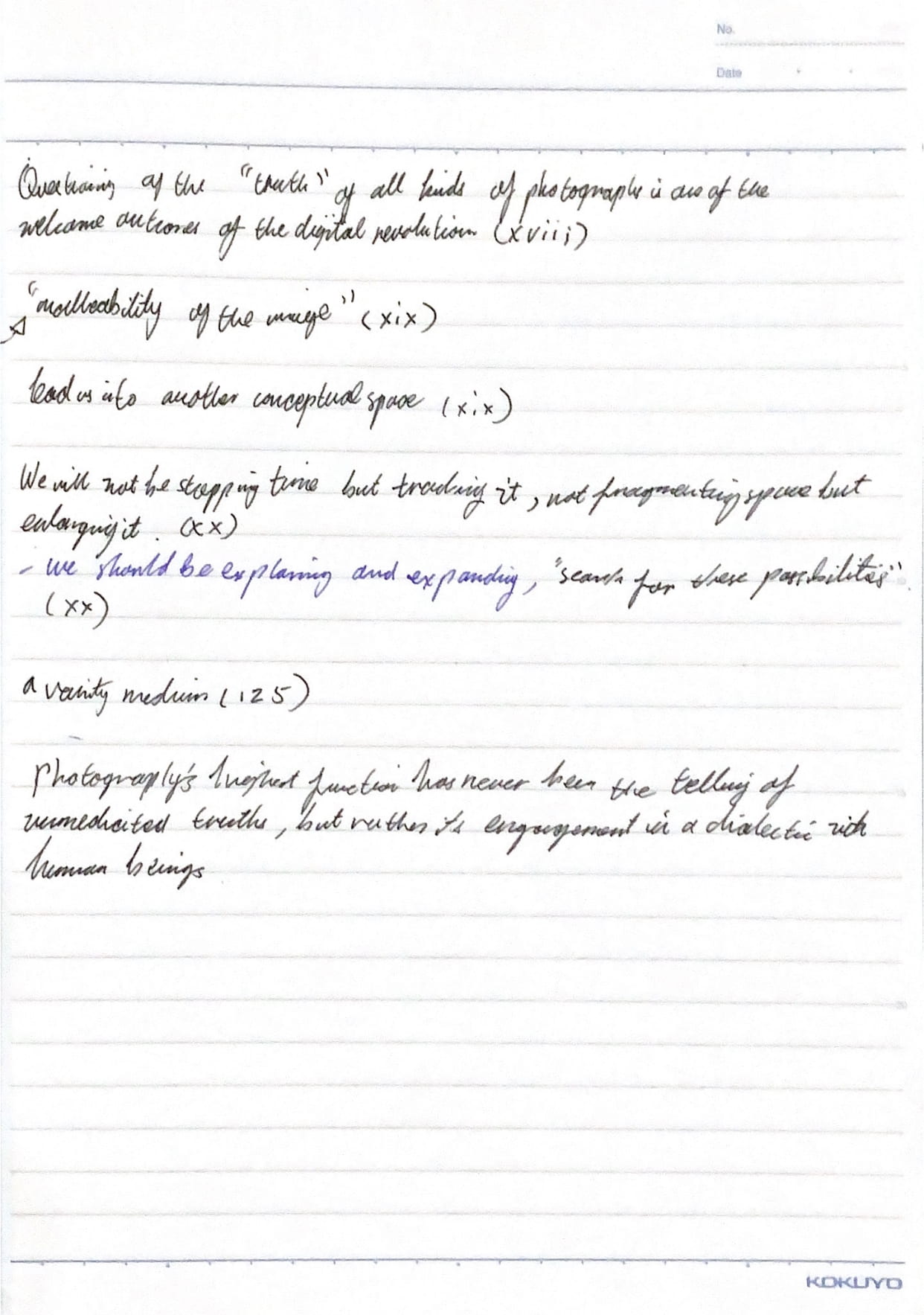What does Ritchin mean with the “fluidity of the digital”? Give an example of digital imaging/digital photography that exemplifies this.
The “fluidity of the digital” refers to the ability of digital media to be continuously changing(xii). Digital means such as digital photography can be easily manipulated through software such as Adobe Photoshop. Images become malleable for the artist to mold (xix). Digital imaging or digital photography is a good example of the “fluidity” of digital media because some form of manipulation occurs during the processing, compression, storage, printing, and display of images. For example, Philippe Halsman’s Dali Atomicus (1948) shows the use of manipulation to a great extent. In the image, there is the Dada and Surrealist artist, Salvador Dalí, and his painting, Leda Atomica (1949), which appears on the composition’s right side—suspended above the ground like the easel, chair, stepstool, cats, water, and Dalí. This image in no way depicts reality or gravity—water cannot curve, chairs cannot float and cats cannot fly. Fluid like the water in the image, the presence of the new digital technology allows the photographer to frame and edit a moment in time that creates a conceptual space and a momentarily newly defined reality.
Fluidity does not only refer to the ability of manipulation; it can even refer to the form, specifically the mean, of the digital such as other media—text, video, virtual reality, and books. Fluidity means that the matter can take any shape or form that it is put in too.

Reflect on the extent to which photography is capable of capturing reality; and compare it to other media (technology) (e.g. text, video, virtual reality, books).
Photography’s ability to capture reality is limited due to its static nature. The extent to which the photograph can track time and enlarge space, as Ritchin puts it, solely depends on the skill of the photographer (xx). Thus, this makes photography’s ability to capture reality limited. On the other hand, virtual reality and even video can emulate a three-dimensional space, not just a conceptual space like images, because it can include mixed modes such as sound. This technology, unlike photography, can duplicate our senses which makes the experience more immersive. Texts and books can capture reality through emotive diction and imagery—word count is unlimited. Although photography can capture reality, it can only capture it to a certain extent and it requires great lengths and tools for a photographer to truly capture reality wholly without bias. Usually, more than two photographs are necessary to introduce concepts of time or storytelling into a work. Contrasting to this, other media like texts, video, virtual reality, and books have the greater and easier ability to depict limitless and unbounded reality.
Other thoughts
Ritchin concludes the importance of using photography not to stop time but to track it; not to fragment space but to enlarge it; and not to tell an unmediated truth but to engage in a dialectic with human beings(xx. 125). We should take advantage of this “fluidity” of digital photography to challenge and explore our perceived reality and scrutinize the little details for the bigger picture.
Notes


Sources
Ritchin, Fred. In Our Own Image: The Coming Revolution in Photography. Aperture.